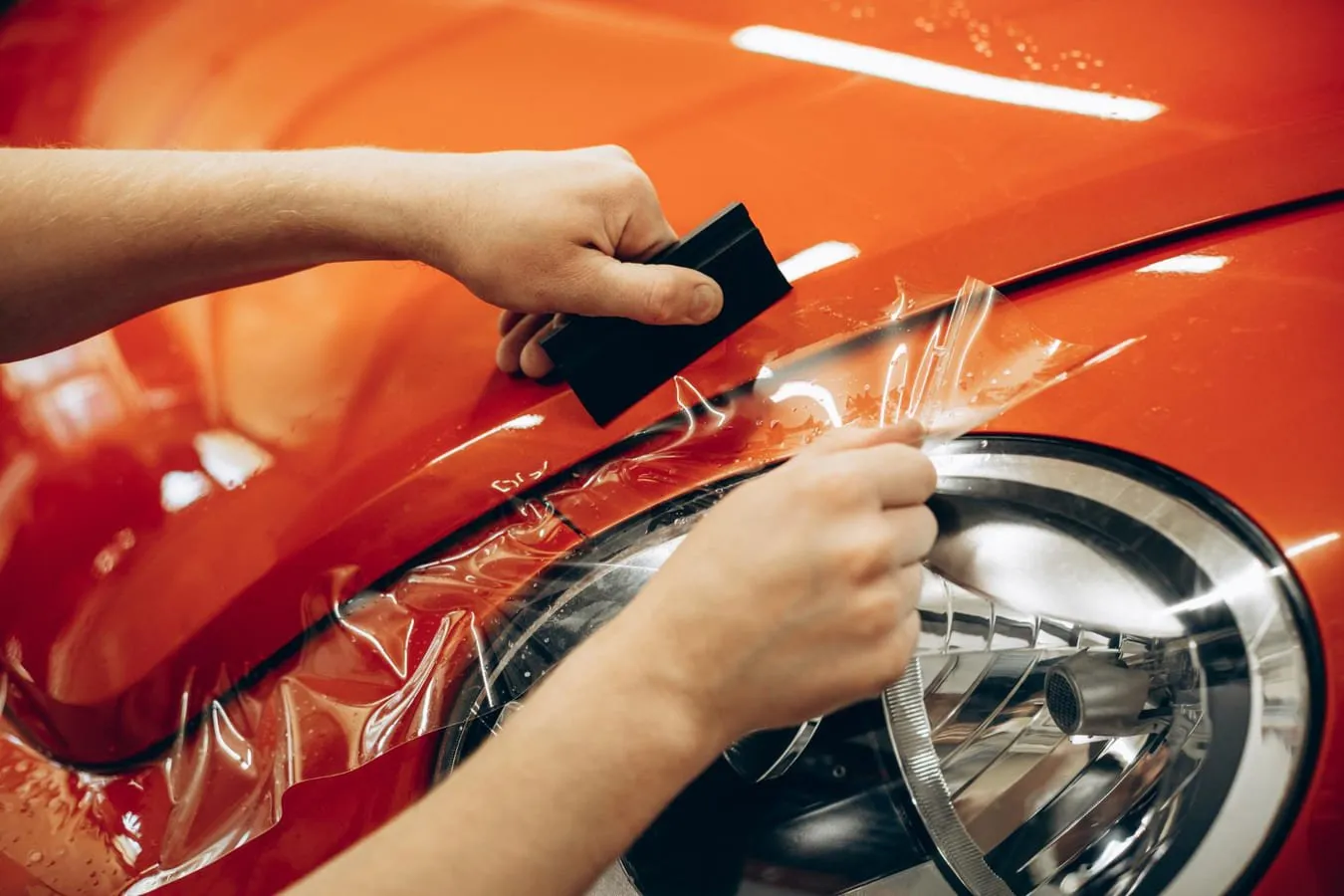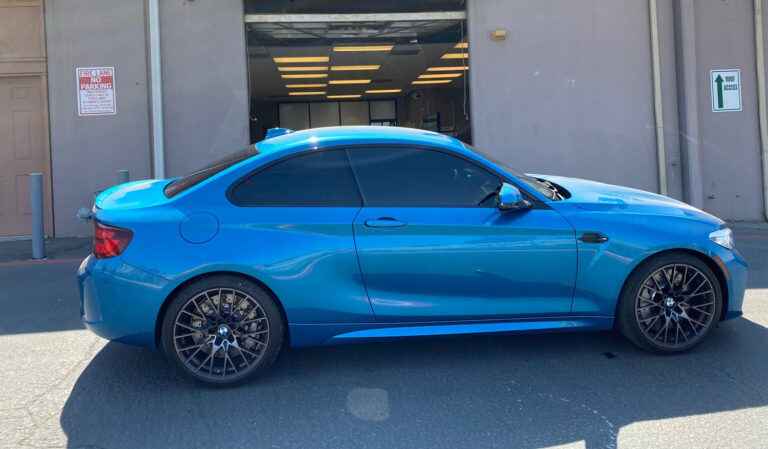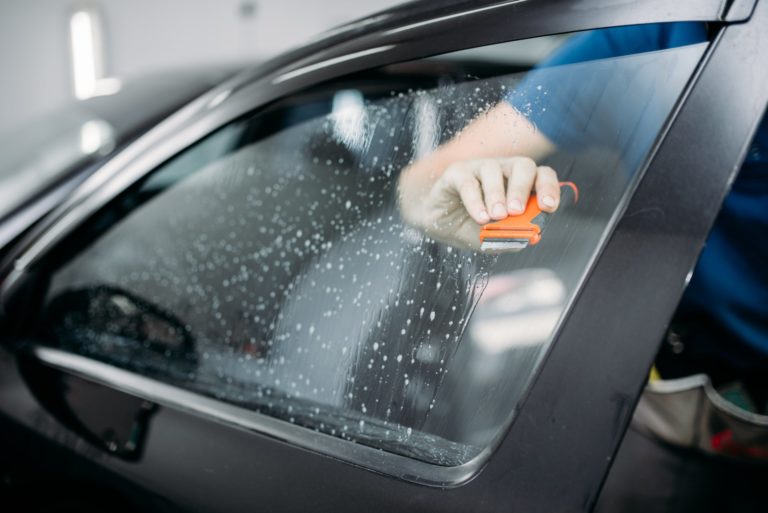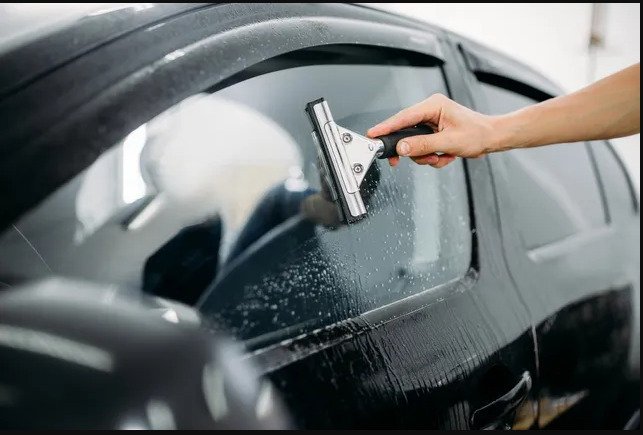Cars, much like their owners, face many challenges over time. From minor scrapes like rock chips and scratches to more noticeable issues such as bug splatters and abrasions, the exterior of a car constantly battles against the elements. Despite these obstacles, every car owner dreams of maintaining that pristine showroom shine, keeping their vehicle looking brand new every day. But is it feasible? Is there a solution that can shield your car’s paint from these everyday damages? The answer is yes, and it’s known as Paint Protection Film (PPF).
PPF is a specialized film applied to the painted surfaces of a car, whether it’s new or used. This product’s principal function is to shield the paint from the deterioration that occurs as a result of driving outside, thereby assisting your vehicle in retaining its pristine appearance. In this blog, we’ll explore how PPF functions, its advantages, tips for maintenance, and its durability.
Exploring Paint Protection Film in Depth
For those unfamiliar with paint protection film, it serves as a transparent layer applied to the exterior surface of your vehicle, offering an additional safeguard against various forms of damage. PPF functions as a barrier, shielding the paint from the scratches, dings, and nicks that are frequently experienced when driving.
Picture yourself driving along a gravel road, only to have rocks unexpectedly ricochet towards your car. Without the protective film, your vehicle could sustain irreparable damage, leading to potentially costly repairs or even necessitating a complete repaint in severe cases.
Furthermore, unpreserved painted surfaces are susceptible to staining from bird droppings, insect residues, and tree sap, which can gradually degrade the color and diminish the value of the vehicle over time. However, the cost of applying PPF is significantly lower than that of repainting a vehicle. Many drivers who have invested in PPF appreciate its ability to shield their cars from the daily wear and tear of the road.
To some, the concept of applying a protective coating may seem futuristic or surreal, similar to adding an additional layer over an existing one. Yet, consider the analogy of a phone screen protector, which effectively prevents cracks or scratches on phone screens. Both serve as transparent layers designed to safeguard the underlying surface.
Types of Paint Protection Films
Now that you have a grasp of what PPF is, let’s explore the various types available in the market.
1. High Gloss PPF
The high gloss paint protection film serves as a solution for preserving the showroom finish of vehicles, maintaining exceptional durability and performance. Besides shielding against harsh weather conditions, it acts as a barrier against stones, stains, insects, and scrapes. Additionally, it features a hydrophobic top coat that repels water and dirt, coupled with self-healing capabilities.
2. Matte PPF
Matte paint protection film offers adequate safeguarding for vehicles with matte finishes, shielding delicate matte surfaces from potential stains. In addition, it offers protection against the sun’s glare and ultraviolet (UV) rays, and it is scratch-resistant for a period of time that ranges from four to seven years.
3. Self-Repairing PPF
Self-repairing paint protection film employs underlying layers that reorganize themselves to dissipate scratches when subjected to heat, either from a heat gun or sunlight. Comprising layers of polyurethane, polyester, adhesives, and a clear coat, these layers are crafted through a process known as microreplication.
4. Temporary PPF
Temporary paint protection film is a disposable option designed to shield the car for specific occasions such as road trips, off-roading adventures, track days, or towing. Easily and swiftly installed, it remains effective for a limited number of days before removal, leaving behind no residue or mess.
5. Off-Road PPF
Off-road paint protection film serves to safeguard the car’s surface from wear and tear during outdoor activities like hiking or camping, where rough terrain increases the likelihood of scratches due to flying debris and prickly vegetation.
Choosing the Best Paint Protection Film
Several factors differentiate superior paint protection films from others, as selecting the wrong one could mean compromising essential protection. It’s crucial to opt for a paint protection film that offers longevity, comprehensive damage protection, and minimal maintenance requirements.
Consider the Durability of the Material
Not all paint protection films possess equal strength. The most resilient ones typically comprise multiple layers, ensuring robust protection. However, the thickness of each layer is paramount. For instance, a quality paint protection film should feature a bottom layer approximately three mils thick to ensure adequate strength. Thinner layers may compromise durability.
Prioritize Quality Manufacturing
Proper manufacturing processes can extend the lifespan of your paint protection film to five or even ten years. Seek out options with reliable warranties, indicative of superior quality and longevity. Without a durable film, degradation over time is inevitable, leading to discoloration, blistering, and other aesthetic issues.
Ensure UV Protection
Modern paint protection films offer protection against ultraviolet (UV) light, safeguarding your vehicle from sun damage. When contemplating the necessity of PPF for your car, opt for a film that includes UV protection to prevent fading and deterioration of the paint.
Opt for Self-Repair Capabilities
Although self-repair technology may seem futuristic, it’s a reality in the realm of paint protection films. PPF with self-repair capabilities minimizes maintenance efforts. If the film sustains a scratch, simple heating and rubbing facilitate effortless repair, restoring a seamless surface. This feature not only reduces damage to your car but also simplifies repairs compared to traditional paint jobs.
Factors to Consider When Installing Your PPF
Applying PPF to your vehicle can serve as a wise investment in preserving its value. However, the key to ensuring effective protection lies in proper installation. Here are some essential considerations to keep in mind as you prepare for the installation process.
Firstly, it’s imperative to select an installer who possesses ample experience and expertise in handling PPF. Entrusting the task to an inexperienced installer may result in poorly applied film, leading to issues like air bubbles, peeling, and potential damage to your car’s paint. A reputable installer should be capable of explaining their installation procedure thoroughly and may even provide references from satisfied past clients.
Secondly, prior to PPF installation, make sure your vehicle is thoroughly clean and free of any dirt or debris. Any particles trapped beneath the film could create unsightly bumps and creases that not only detract from the appearance but also compromise the protective function. Therefore, wash your car meticulously with soap and water before the installation process commences.
During this phase, precision cutting is essential to ensure that the film fits perfectly and covers all designated areas according to your specifications. Just like fitting puzzle pieces together to form a cohesive image, the automotive market features various models with distinct features. Precision cutting enables the creation of customized protective layers tailored to the unique requirements of different vehicles.
Lastly, determine whether you prefer full or partial coverage and consider which areas of your vehicle are most susceptible to chips or scratches, necessitating additional protection. The installer can apply PPF to various vulnerable areas such as bumpers, hood guards, headlights, mirrors, rocker panels, and door edges. Some owners opt for partial coverage, focusing on the front end, where most damages occur during daily driving, while others prefer full body coverage for comprehensive protection.
Final Thoughts
Ultimately, the decision to choose paint protection film boils down to engaging in conversations about the key features of each film with your local auto mechanic or supplier. It’s essential to discuss factors such as budget, materials, and the expected lifespan of the film. By gaining insight into the durability of the various available films, you’ll be better equipped to choose the best product for your car.
If you’re considering protecting your car paint with paint protection film, don’t hesitate to reach out to Tint City today. We can assist you in comparing PPF prices and offer recommendations on which product would best suit your vehicle’s needs.




